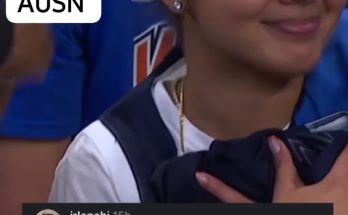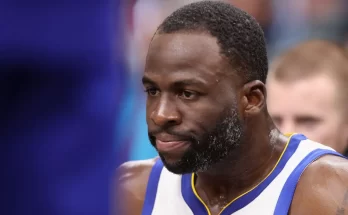Kevon Looney’s pending move to the New Orleans Pelicans this offseason punctuates a decade-long journey with the Golden State Warriors that shaped both player and franchise alike. Having been drafted 30th overall in the 2015 NBA Draft, Looney evolved from a promising prospect into a fundamental piece of the Warriors’ dynasty. Over the last ten years, he quietly anchored the paint with toughness, consistency, and an unshakeable work ethic—playing his role without fanfare, yet always delivering when it mattered most.
Looney’s arrival in the Bay Area coincided with a Warriors team on the rise, brimming with potential and fresh off a 2015 Finals appearance. He endured serious hip injuries early on, missing nearly two full seasons before rededicating himself to become one of the league’s most dependable role players . His perseverance became emblematic of the team’s mentality: grind first, flash later. What he lacked in athleticism, he made up for in positioning, technique, and a nose for rebounds—whether he averaged modest numbers, his impact often tipped the scales in tight playoff games.
There were pivotal benchmarks that etched his status into the franchise’s lore. In the 2022 playoffs, he hauled in 22 rebounds in a single game against Memphis to help close the series, and followed with a 21-and-12 outing against Dallas in the Conference Finals. In the 2023 first round against Sacramento, he became only the third player in Warriors history to record multiple 20-rebound playoff games, joining legends Wilt Chamberlain and Nate Thurmond. Those performances weren’t anomalies—they defined a player who delivered beyond expectations, especially in crucial moments.
Off the court, Looney’s presence radiated through the locker room as a steady influence. Steve Kerr praised him repeatedly as the team’s “moral compass”—a voice of calm during streaks, slumps, and the slow burn of change. He mentored youthful talents like Jonathan Kuminga and Quinten Post, bridging the gap between fading veterans and rising prospects. His humility exemplified what it meant to be a “Warrior for life”—one who showed up, did the gritty work, and carried the team ethos from season to season.
His departure is far from a simple roster move—it signals the official close of a decade-long identity. When Klay Thompson left last offseason after 13 seasons, fans felt a shift. With Looney gone, the Warriors lose not only a body in the paint, but a guardian of culture, a go-to glue guy, a bridge between eras .
Golden State now enters a post–dynasty identity crisis, having already lost key players like Klay and now Looney. Between roster changes and evolving styles of play, the organization is challenged to redefine itself while still competing in an increasingly deep Western Conference. This offseason, they’ve drafted prospects like Alex Toohey and Will Richards, but the most glaring need is a new big man—preferably one who can stretch the floor, rebound, defend, and also embody the team’s character .
Al Horford’s name has emerged as a potential suitor given his shooting, experience, and professionalism . But even if Golden State successfully lands a veteran like him, that player will have big shoes to fill—not simply in performance, but in spiritual leadership. Looney’s impact didn’t show up in highlight reels; it came in toughness, discipline, guidance, and setting the tone every day in practice and at the arena.
The void left by his exit will test the Warriors’ mettle as deeply as any loss of talent could. It will expose how much of their continued success hinged on intangible foundations as opposed to just perimeter shooting or championship star power. Curry, Thompson, and Green will still deliver excellence, but someone new must galvanize the “grind-first” spirit that Looney embodied quietly but profoundly.
Adding to the introspection, Looney’s new Pelicans chapter is a story of full-circle. He’ll reunite with former teammate Jordan Poole and coach Willie Green in New Orleans. His presence offers veteran stability to a young roster, while offering Golden State fans no small hope that one day he might return in another role—TV analyst, coach, community ambassador, or even alumni advisor .
Social media and fans responded with an outpouring of respect and emotional tributes—fitting for a player who rarely sought spotlight but whose presence was deeply felt . Steph Curry labeled him “Forever a legend, Toon!!!!” and “17 on the clock,” a show of love that spoke volumes. Kerr himself offered a poignant goodbye: “We can’t thank you enough… I can’t thank you enough… Thrilled for you and what lies ahead in New Orleans.
This moment invites reflection on the Warriors’ culture, progress, and the road ahead. Over the past decade, their blueprint hinged on shooting, spacing, switching, and champion synergy—but beneath every flash was grit, commitment, boredom of repetition, and trust in the system. Looney was the emblem of that grind mentality. His departure is more than a roster vulnerability—it’s an emotional shift, one that takes Golden State into uncharted psychological territory as a franchise that has never truly endured a sustained rebuild.
The mantle now falls to Draymond Green, Steph, and core leadership—alongside emerging players—to preserve the ethos Looney helped craft, while passing down its values to next generation. It’ll take new rituals, voices, mentoring, and reminders of what earned them championships. The battle in the frontcourt will test their resilience and ability to adapt.
On the court, eliminating a rebounder like Looney shifts matchups, rotations, and scheming strategies. Defensive switching patterns and small-ball executions often depended on his presence. His departure likely means more minutes for Trayce Jackson‑Davis and Quinten Post, but those are unproven against playoff-level physicality and tempo. That’s why the team is eyeing veteran depth via Al Horford, or potentially walking the wire to land another stretch-forward who can unleash the offense without sacrificing the interior grit.
In essence, Looney’s exit is a cultural bellwether: the old guard dwindles, the frontcourt enters its rebuilding phase, and the foundational qualities of resilience, mentorship, and toughness must now be rekindled in new personalities. The Warriors face an identity crossroad; they must decide whether to chase a short-term chase for rings via expensive veteran signings or lean into a fresh blueprint featuring younger assets and internal development.
Golden State’s performance in 2024–25—48 wins, seventh seed, swept by Minnesota in the West semis—proved they remain competitive, but narrowly so . Without Looney, that competitive cushion may tighten. Pressing matters will include the free agency signings they pursue, roles allotted to veterans vs. rookies, and how effectively leadership translates old lessons into new atmospheres.
One constant remains: the Chase Center crowd will always chant “Warriors, for life.” Looney’s departure doesn’t erase his mark; if anything, it elevates his legacy. He exits as the consummate professional whose absence brings clarity to what the franchise once had and what it must now rebuild. Fans will continue chanting his name, speculating on future roles, or perhaps even lobbying for his jersey to hang in the rafters someday—all reflections of a player who transcended statistics to become a lasting icon.
In the grand sweep of NBA dynasties, Looney’s tenure represents the era of basketball as art of cooperation. His partnership with Draymond on switches, with Jarrett Allen on centers, and with Steph on channels of trust, carved out a Warriors template widely copied by smart teams. Now, Golden State must ask: what is the next art form? Who expresses it? Who coaches it?
As the summer progresses, pay close attention to how the organization addresses this vacuum in the middle—physically and culturally. Whether they chase Horford-like ability or tilt toward developing youth, their path forward will signal the direction of the next era: reignited dynasty, new blueprint, or steady competitiveness until big changes unfold.
Kevon Looney didn’t finish in dazzling fashion. There were no All-Star appearances or scoring titles. But he left as a three-time champion, a locker room leader, the glue of legendary lineups. His departure feels like leaving a house carefully built, room by room, with his handshake on every beam and nail.
The Warriors now stare into that house with new eyes—some rooms empty, others in need of renovation. What matters is how they react: with nostalgia or reinvention; with embrace of change or clutching the past. Either way, Looney’s exit marks the most tangible sign yet that Golden State’s greatest era is genuinely in the rearview mirror.
And yet, with that acknowledgment comes opportunity. There is space to unfold a new identity, a fresh champion mindset. But custodians must remind the young ones that dynasty demands dirt, sweat, rebounding drills at dawn, and silence under pressure. Those were Looney’s gifts—the invisible ones. Can Golden State re-anchor in that spirit? Or will they chase facades? The future hinges on whether they can find a new player to wield that torch. Until then, this moment, this departure, carries its own echo: the end of an era, and the fragile birth of another.



